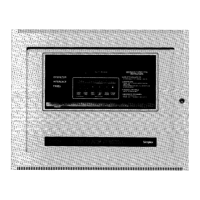Once a minute, the 4020 software performs a self-alarm test of each TrueAlarm’” sensor. The self-alarm test raises
the value of each sensor to a value that simulates an alarm condition. If the sensor reports back a value that is not
within the alarm range, a “self-test abnormal” trouble will be displayed for that specific sensor.
The following paragraphs discuss the responsibilities of 4020 system operators when these trouble indications
occur.
ALMOST DlRTY INDICATION
Using the front panel keypads, it is possible for a SIMPLEX Field Service representative to turn on a system point
that allows an “almost dirty” sensor to report a trouble. Although the “almost dirty” sensor is holding its sensitivity
level, the 4020 operator can schedule maintenance for the sensor before the dirty sensor trouble occurs.
DIRTY INDICATION
A “Dirty” indication means that the sensor is holding its sensitivity level, but that the 4020 operator should schedule
maintenance for the sensor. Clean the sensor as required and, if necessary, call Simplex for service.
EXCESSWEL Y DIRTY INDICATION
The “Excessively Dirty” indication means that the sensor is no longer compensating for dirt and dust. Because false
alarms are possible with this condition, sensors must be cleaned as soon as possible. If necessary, call Simplex for
service.
SELF-TEST ABNORMAL INDICATION
All 4020 system sensors are automatically tested once every minute. If a sensor fails to report properly to the 4020
master controller, a “self-test abnormal” condition occurs. Since the sensor is not working properly, it must be
replaced. Replace it, or call Simplex for service.
20
Technical Manuals Online! - http://www.tech-man.com

